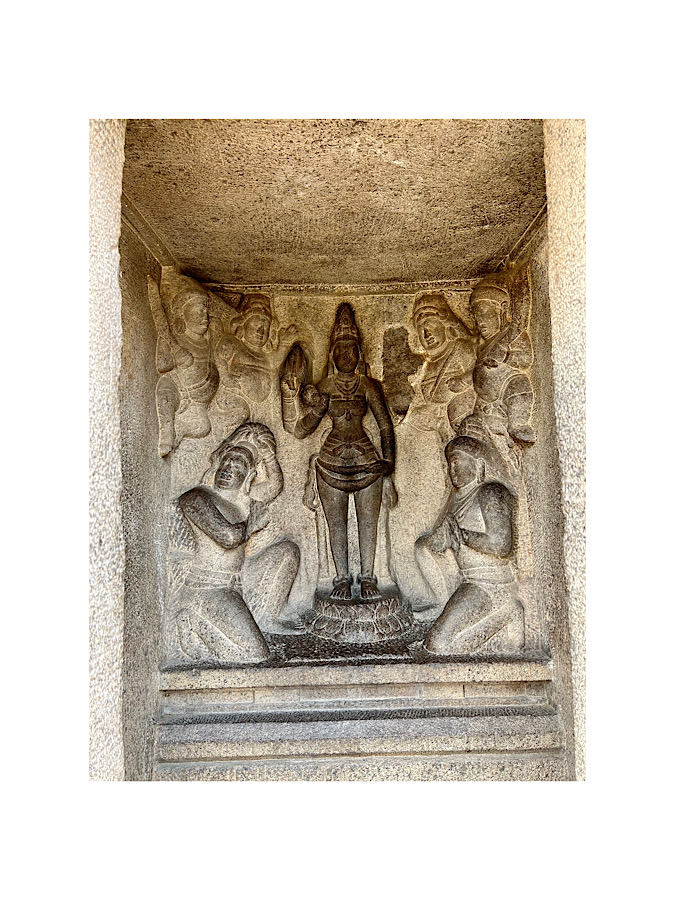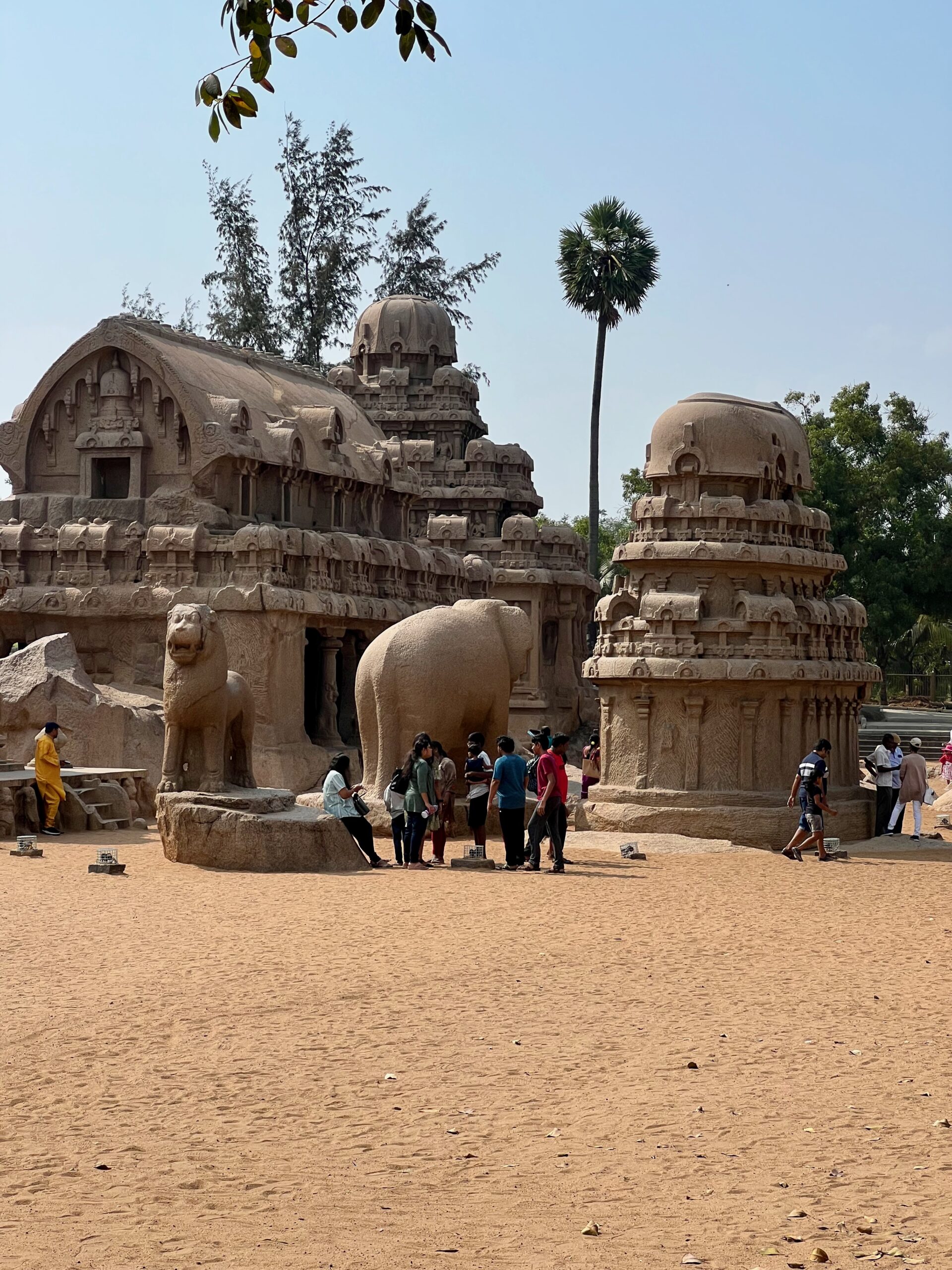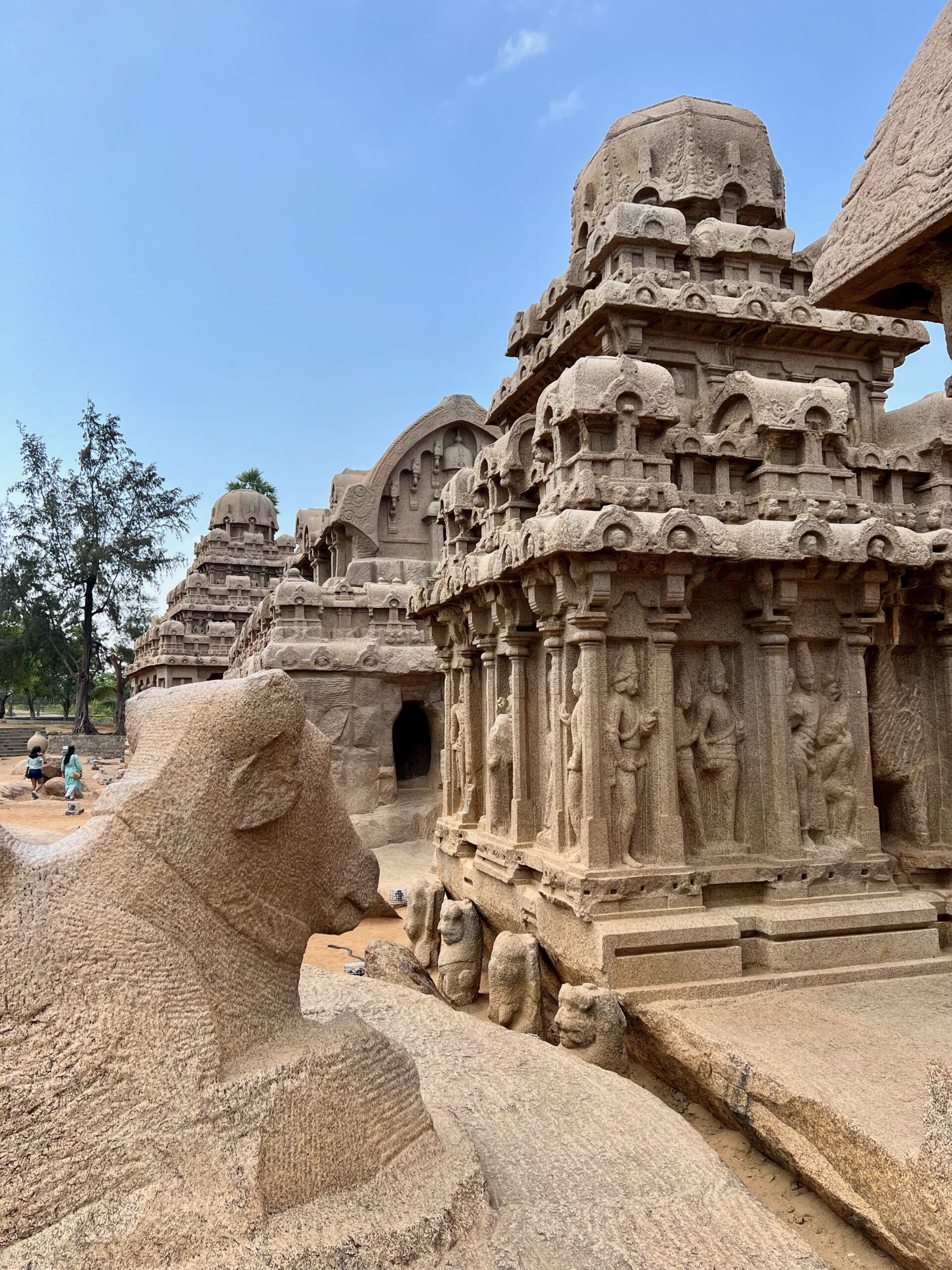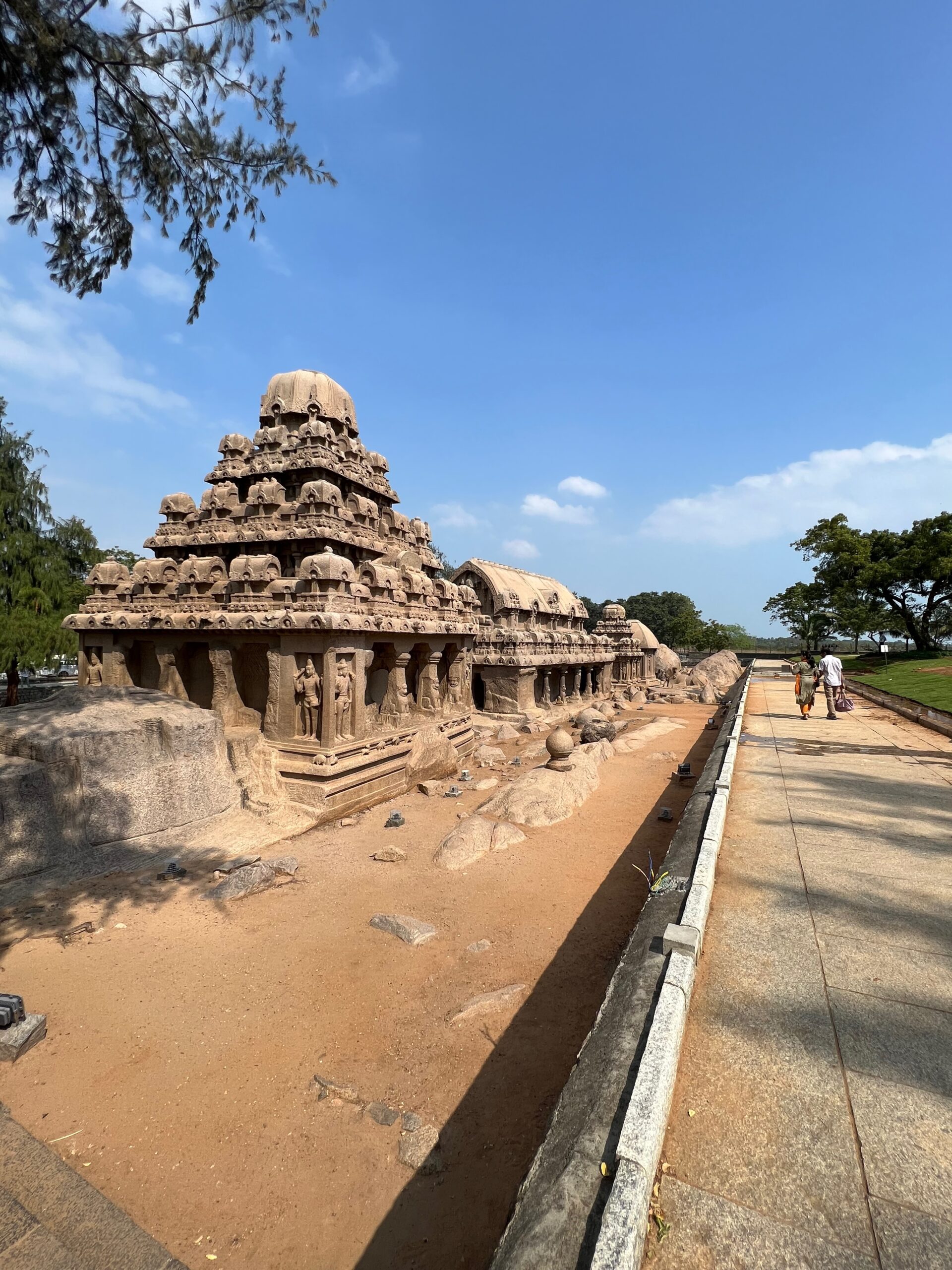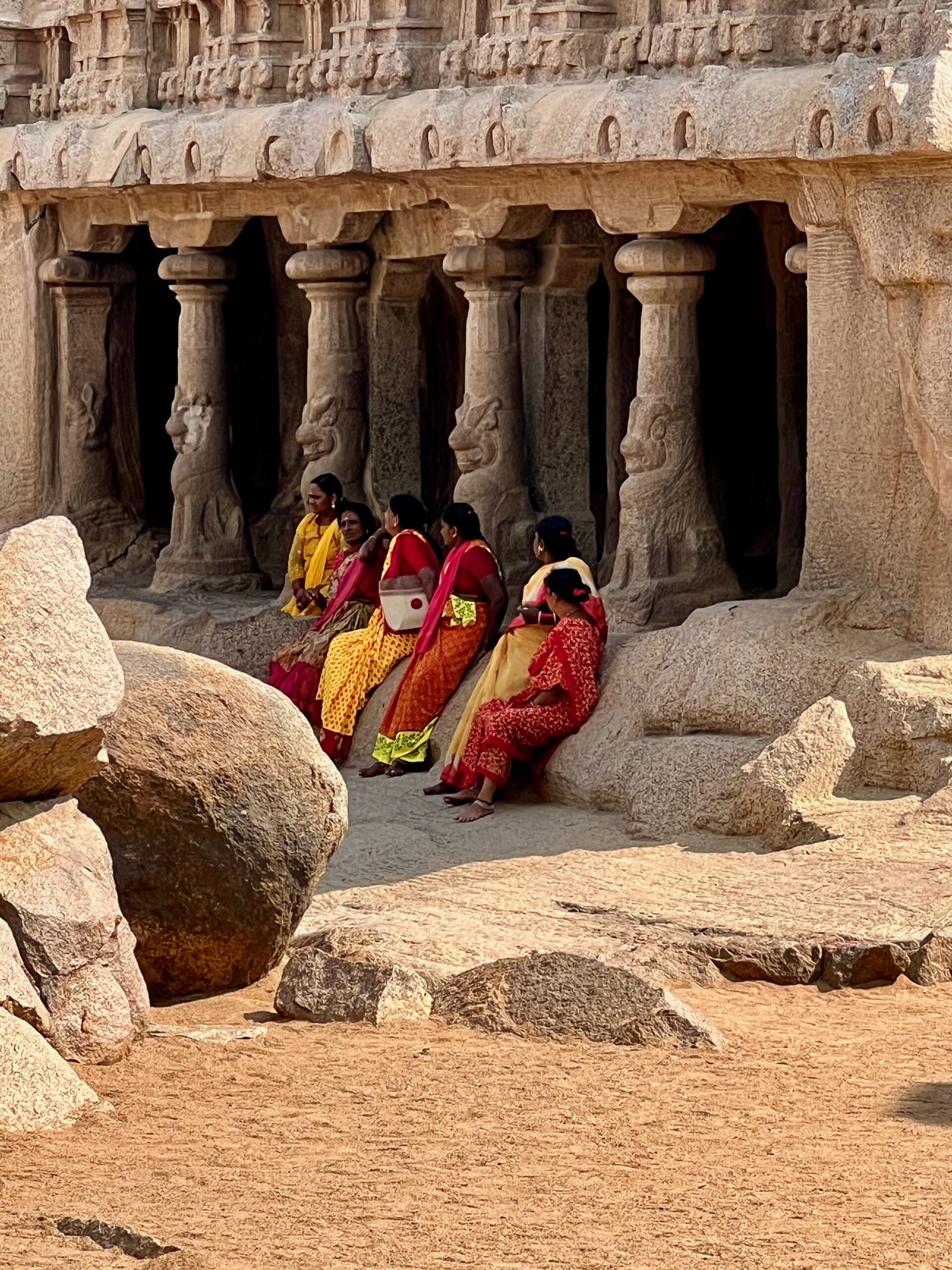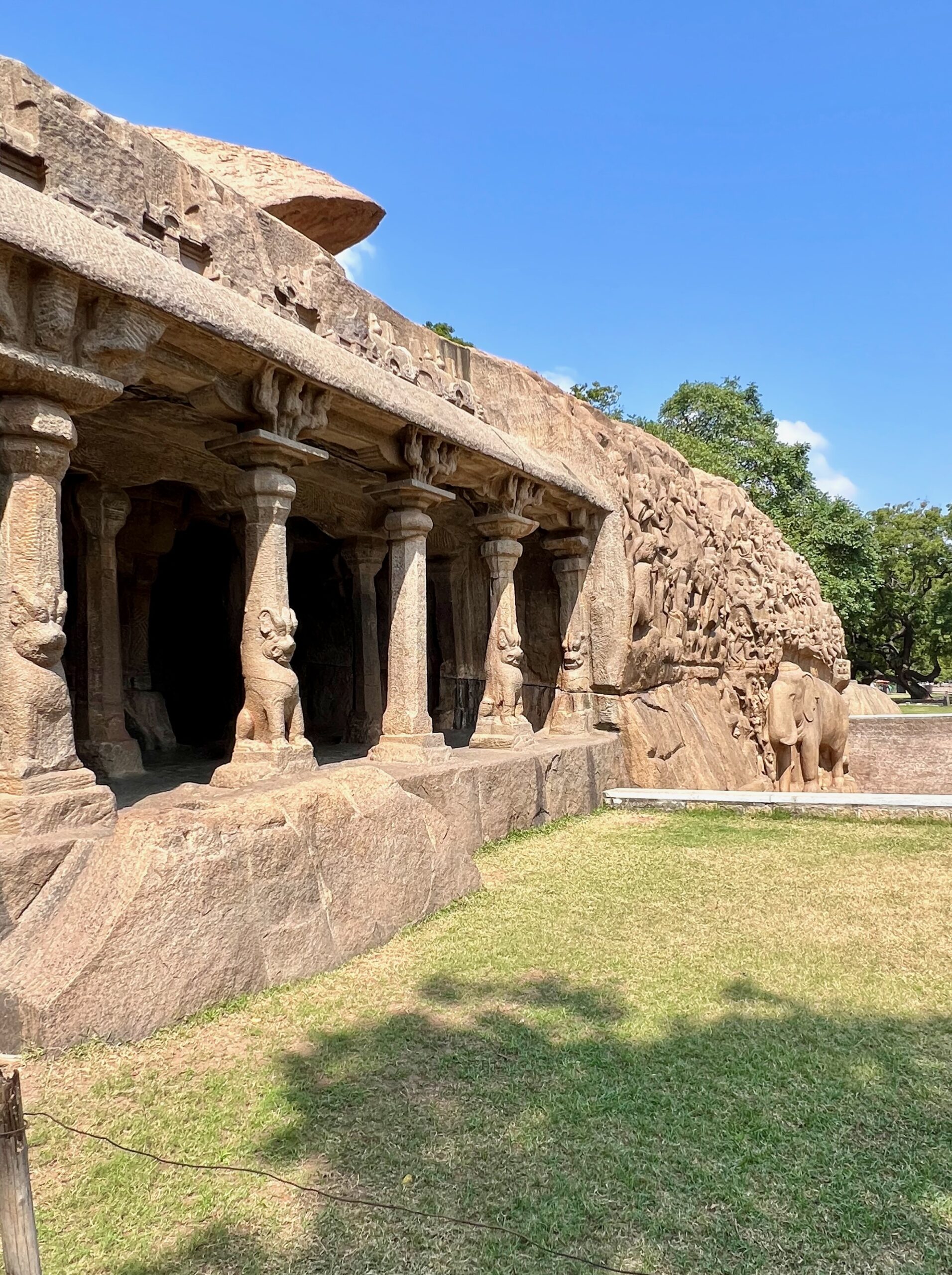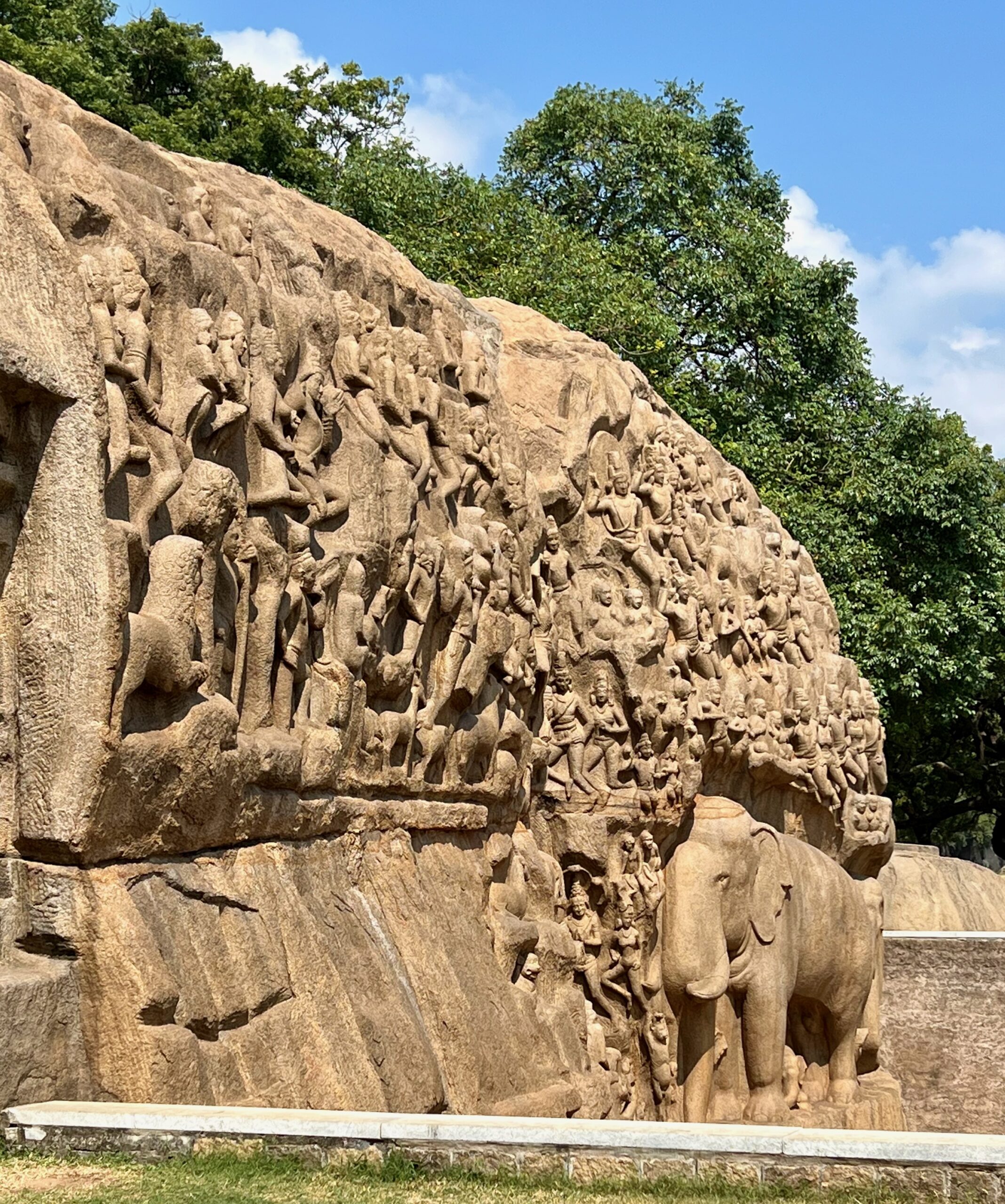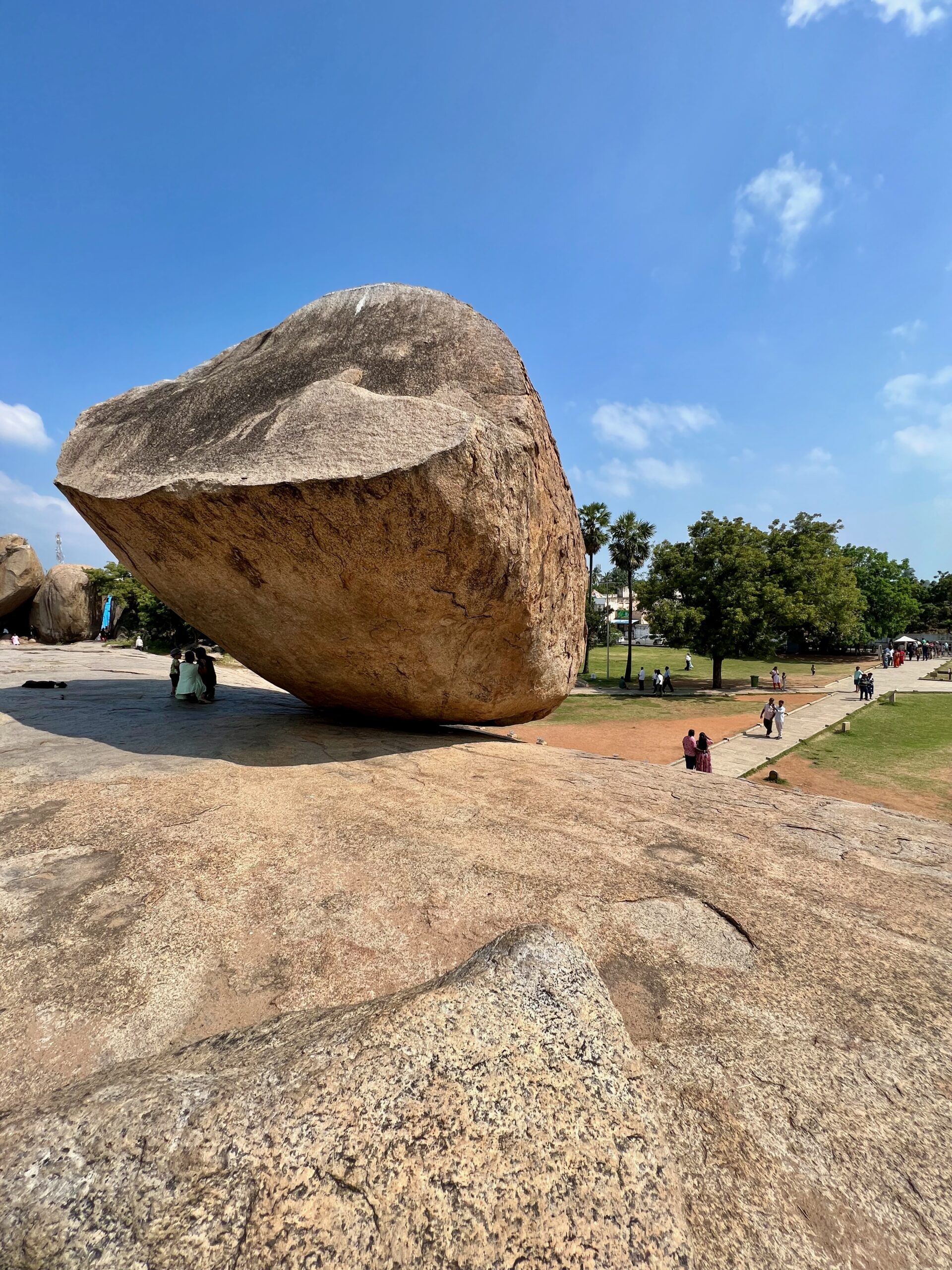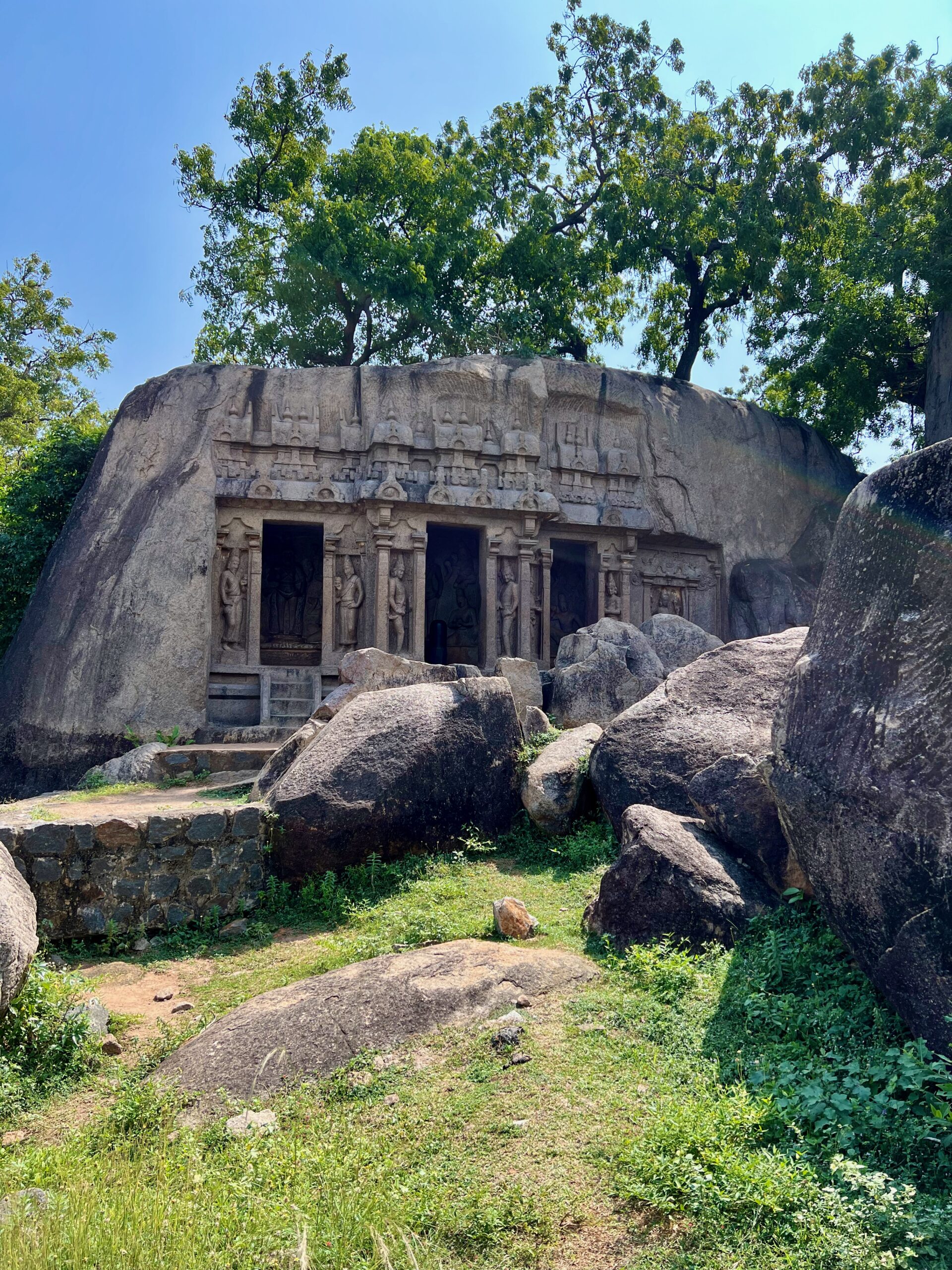Temples were originally made of wood and bamboos – organic matter that would not last much more than 50 years. Not satisfactory. So in the 7th century, the Pallava dynasty conceived of temples carved out of granite rock. In southern India, there are many places where you find monumental rocks lying around on the ground. They are over 3 billion years old, and erosion has exposed them as boulders, often with round shapes. Here they happened to be groups of them lying around in a cluster. So thousands of sculptors went to work. Either to excavate a temple with its own roof, or sculpt an elephant nature size. Or sculpt a giant relief carving on the side of an enormous boulder. A remarkable piece of work and a monumental undertaking. Like so many things in this country.
The guides say that in India, temples are classified as rock-excavated temples or rock-cut (sculpted) temples. Belonging to one of three categories: unplanned, planned and very well planned !

My first temple visit was to Mahabalipuram, some 60 km south of Chennai, on the coast line. It is a very famous place where one finds groups of royal monuments of one sort or another. Each monument, whether a temple, free standing sculpture or carvings on the side of a monumental rock, is originally from one single piece of granite that was just lying there. It was excavated or sculpted over many years by hundreds of rock sculptors with very basic tools. Just imagine – solid granite !

